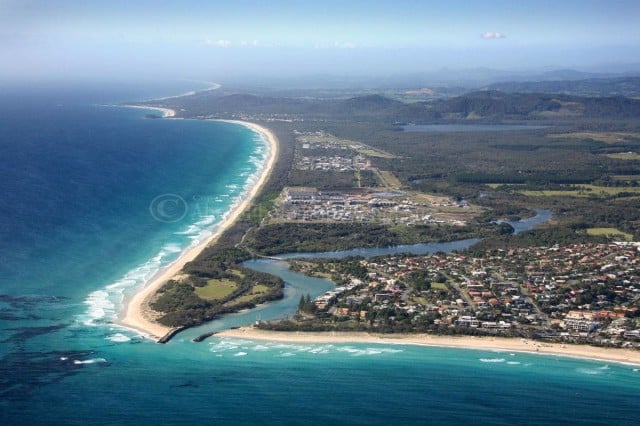Brought to you by The Echo and Cosmos Magazine
Researchers are watching our shorelines get harder and simpler.
As urbanisation increases, the world’s coasts are changing their physical shape: from fluid and mobile sand and eroding rocks and cliffs they’re becoming harder and simpler with the addition of piers, sea walls, and other engineering projects. The result could lead to less diversity of coastal species and nutrients in coastal environments.
A team of New Zealand and Australian researchers have quantified this, with a model that predicts what distance of coastlines are likely to become artificial – or harden – over the next few decades.
‘Basically, all our infrastructure is hard,’ says Dr Ana Bugnot, a marine ecologist at the University of Sydney and co-author on a paper describing the research, published in Nature Sustainability.
While some natural coastlines can be stark and rocky there are also many soft, sediment-heavy environments like mangroves, mudflats, and marshes. When urbanised, both of these environments typically get replaced with physically hard structures.
This has knock-on effects for coastal ecosystems, with the new habitats benefitting ‘a very different ecological community’. These places can often favour invasive species, or can promote a more homogenous ecosystem by allowing one species to dominate.
Artificial habitats are often much simpler than natural environments, even if their physical nature hasn’t changed much.

‘If you think of rocky shore or rocky outcrop, those rocks usually have a lot of different structures,’ says Bugnot.
‘Everything gets very simplified in human built structure. And that means that you have less habitat for the animals to colonise.’
This coastal hardening has been documented around the world, but it’s been difficult to tell how much it’s expected to increase.
‘We’ve actually done quite well at documenting where things are hardening right now, where we have structures like sea walls and pontoons and wharves,’ says co-author Dr Katherine Dafforn, an environmental scientist at Macquarie University.
‘But to manage them into the future, we really need a tool that can help us predict what’s going to happen next, and a tool that helps to manage ocean spaces for multiple stakeholders and uses.’
Read more: Monitoring coastline erosion risk

The researchers examined satellite data from 30 different cities around the world, mapping artificial and natural structures. They found that over half (approx. 53 per cent) of the coastline in these 30 centres has been replaced with artificial structures.
They then combined this data with demographic, economic and shipping information to develop a predictive model for coastal hardening.

‘This tool will help us to understand where and how much coastal hardening is going to occur in the future,’ says Dafforn. ‘It’s super important to understand that, given predictions of sea level rise and population growth, that we know will drive more construction.’
Dafforn adds that the tool could be used to help manage coastlines.
‘In situations where we shouldn’t build, we could probably use the tool to predict areas that might be more sensitive to changes from construction. But if we have to build, and there’s no other option, then this tool can help to understand where that might occur.
‘And then we can build a structure for multifunctional purposes – so we don’t just need to construct for protection or infrastructure. We can build to encourage things like biodiversity, or to facilitate particular species that improve water quality.’
A particular focus of the researchers is preventing invasive species from taking hold.
Using this model on New Zealand as a case study, the researchers found that over the next 25 years, New Zealand could expect an additional 243 to 368 kilometres of coastline where artificial structures will replace the natural environment, depending on its economic growth.
‘We hope that the study helps relevant agencies understand the scale of present-day coastal hardening and the socio-ecological significance of this,’ says Dr Oliver Floerl, a senior marine scientist at the Cawthron Institute in New Zealand, and lead author on the paper.
‘We also want to create an awareness that considerable further expansion is likely and that proactive mitigation strategies are needed.’
This article was originally published on Cosmos Magazine and was written by Ellen Phiddian. Ellen Phiddian is a science journalist at Cosmos. She has a BSc (Honours) in chemistry and science communication, and an MSc in science communication, both from the Australian National University.






